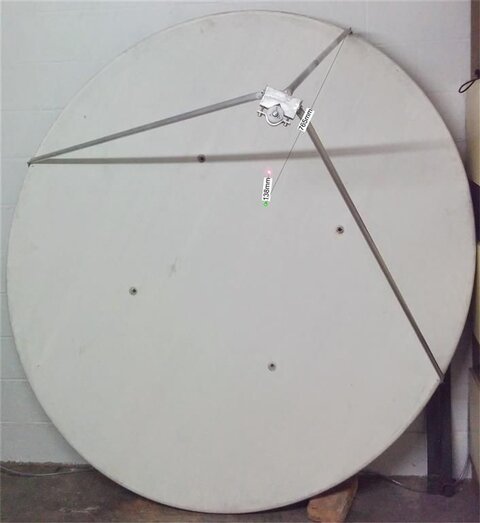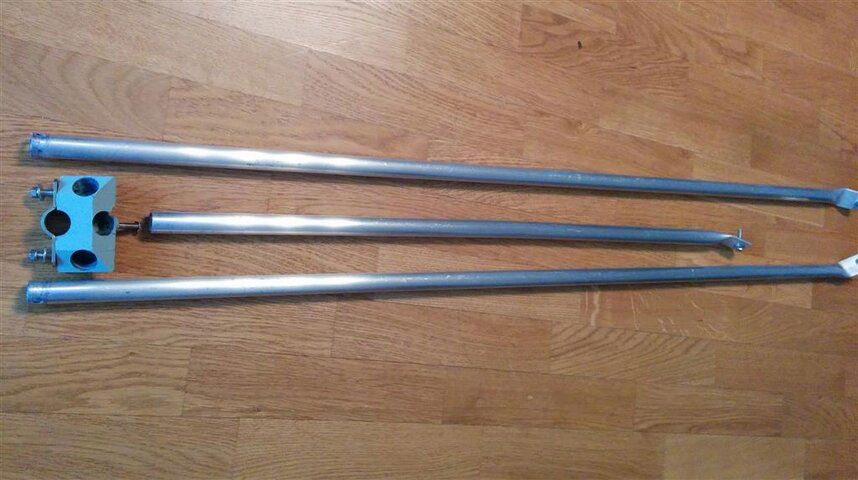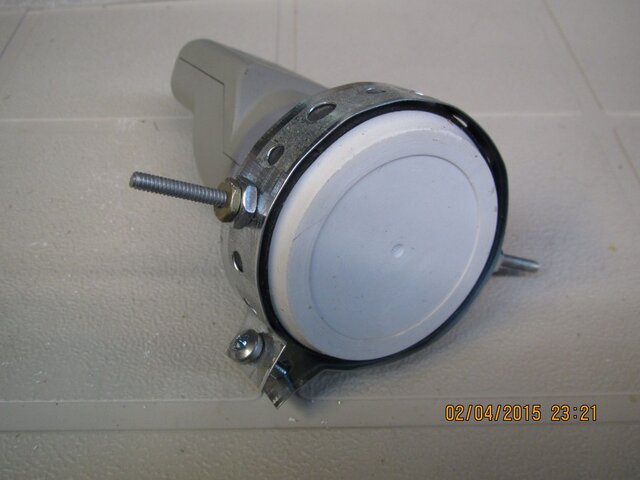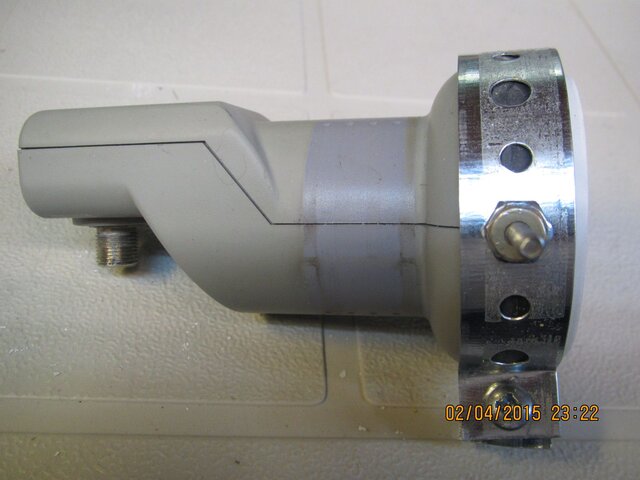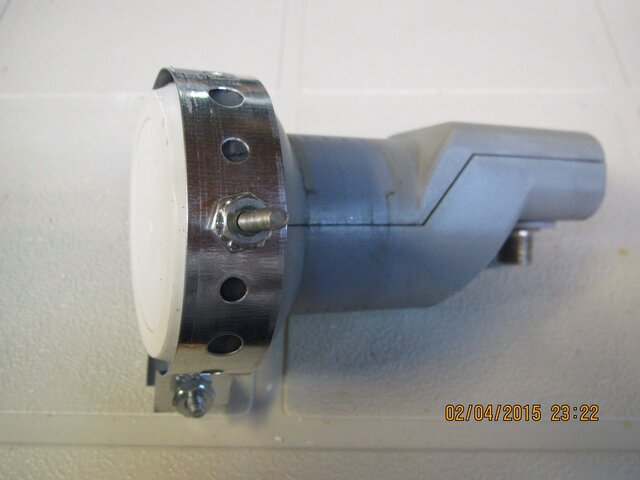Believed that a picture is worth a thousand words... now, it seems, a few words are still needed...Thanks for sharing those pictures. Construction looks sooo complicated. So, You've tried, and your conclusion is.....?
I am not sure I understand need for second laser. Could you explain process you went through?
One laser projects a beam along the LNBF axis of symmetry. Not movable.
Second laser can display a cone, within which the LNBF "sees" the incoming radiation (reflected from the dish).
First laser reveals, that the LNBF is pointed BELOW the dish's centre (assuming, the four mounting screws define the centre ).
The second laser, sitting on a ball bearing, thus rotat-able, reveals a cone, which, surprisingly, has a "preference" for the upper side of the dish.
The cone angle was adjustable, so, I chose such an angle which was within the dish's face.
Referring to a clock's face, the laser shone at the edge at 12 o'clock.
9 o'clock and 3 o'clock - 2 " from the edge.
6 o'clock - laser was 3 1/2 " from the bottom.
So, LNBF is pointed BELOW the dish's centre, and, still, is illuminated by the upper part of the dish? Neglecting the bottom?
FaT Air is right, the manufacturers of the dishes prefer that the LNBF "sees" rather thermally cold sky than warm Earth (optimum performance).
Cheers, polgyver




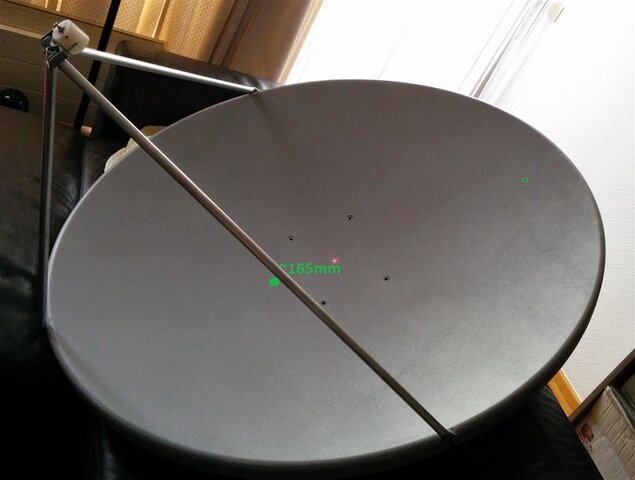
 .
.